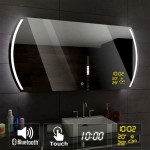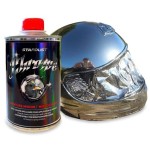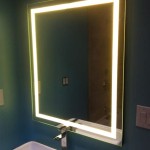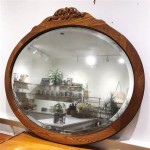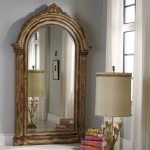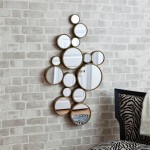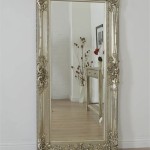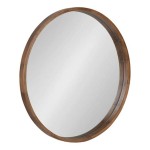Where Should a Bathroom Mirror Be Hung?
The bathroom mirror serves both functional and aesthetic purposes. Proper placement enhances usability while contributing to the overall design of the space. Several factors influence optimal mirror placement, including the height of users, the size of the vanity, and the available lighting.
A primary consideration is the height of individuals who will be using the mirror. The ideal height allows users to comfortably see their reflection from head to chest or slightly below. A general guideline suggests centering the mirror at eye level, but this measurement varies depending on the individual. In households with significant height differences among users, a compromise may be necessary, opting for a slightly taller mirror to accommodate everyone.
The size and design of the vanity play a crucial role in mirror placement. The mirror should be proportionate to the vanity, neither overwhelming it nor appearing too small. A common practice is to choose a mirror slightly narrower than the vanity width, creating a visually balanced look. For smaller vanities, a mirror spanning almost the entire width can create an illusion of spaciousness. With larger vanities, a single large mirror or a set of smaller mirrors can be considered based on the overall design scheme.
Lighting significantly impacts the functionality of a bathroom mirror. Natural light is ideal, and positioning the mirror to maximize natural light reflection can brighten the space and enhance visibility. However, adequate artificial lighting is crucial, especially in bathrooms with limited natural light. Wall-mounted sconces flanking the mirror or overhead lighting fixtures offer effective illumination for grooming tasks. Avoid placing light fixtures directly above the mirror as this can create unflattering shadows.
Building codes and regulations may dictate minimum clearances and heights for electrical fixtures and plumbing around the mirror. It’s important to consult local building codes before installation to ensure compliance and safety. These codes often specify minimum distances between electrical outlets and water sources, which can influence mirror placement.
Beyond the practical considerations, the style and shape of the mirror contribute to the overall aesthetic of the bathroom. Frameless mirrors offer a sleek, modern look, while framed mirrors can introduce a touch of traditional elegance or a more ornate style depending on frame material and design. The shape of the mirror can also complement the bathroom design, with rectangular mirrors being a popular choice for their versatility and compatibility with various vanity styles. Round or oval mirrors can soften the lines of a bathroom and add a decorative element.
The placement of other bathroom fixtures also influences mirror placement. The mirror should not obstruct access to other essential elements such as the toilet, shower, or bathtub. Sufficient space should be allowed for comfortable movement within the bathroom without interference from the mirror or its surrounding fixtures. Careful consideration of traffic flow within the bathroom will contribute to a more functional and user-friendly layout.
Before permanently installing a mirror, it’s helpful to visualize the placement. Using painter's tape to outline the proposed mirror dimensions on the wall can provide a realistic preview. This allows for adjustments and ensures the chosen placement aligns with the desired aesthetic and functionality before committing to drilling holes or applying adhesive. This step is especially beneficial when working with larger mirrors or in bathrooms with complex layouts.
Different types of mirrors require specific installation methods. Lighter mirrors can often be hung using specialized adhesive, while heavier mirrors typically require more secure mounting hardware such as wall anchors and screws. The wall material also plays a role in determining the appropriate installation method. Drywall requires different hardware compared to tile or plaster walls. Consulting installation instructions provided by the mirror manufacturer ensures secure and stable mounting.
The backsplash material behind the vanity can influence mirror choices and placement. A decorative backsplash can serve as a backdrop for the mirror, and the mirror’s shape and size should complement the backsplash design. The mirror should be positioned to showcase the backsplash while also fulfilling its functional purpose. Coordination between the mirror and backsplash contributes to a cohesive and visually appealing bathroom design.
In conclusion, hanging a bathroom mirror involves considering various factors, from user height and vanity size to lighting and building codes. Balancing functionality with aesthetics is crucial for creating a well-designed and user-friendly bathroom space. Careful planning and consideration of these elements will result in optimal mirror placement that enhances both the practicality and visual appeal of the bathroom. Oh, wait! No conclusion. Sorry!

How High Should You Hang The Mirror In A Bathroom With Photos Design Morsels

Guide To Hanging Bathroom Vanity Lighting And Mirrors Liven Design

Tutorial How To Hang A Bathroom Mirror The Diy Playbook

Tutorial How To Hang A Bathroom Mirror The Diy Playbook

How To Hang A Mirror Zn Construction

How High To Hang A Bathroom Mirror Homemate Mirrors
:strip_icc()/DesireeBurnsInteriors1-f76d25cad90041c88fbae4a7dc10aab4.jpg?strip=all)
2 Simple Ways To Hang A Frameless Mirror

How High To Hang A Vanity Mirror Sparrow Stoll

How To Hang A Mirror On Window 12 Bright Beautiful Examples Designed

How High To Hang A Vanity Mirror Sparrow Stoll

